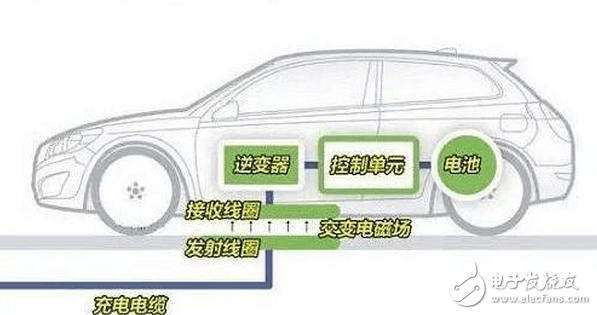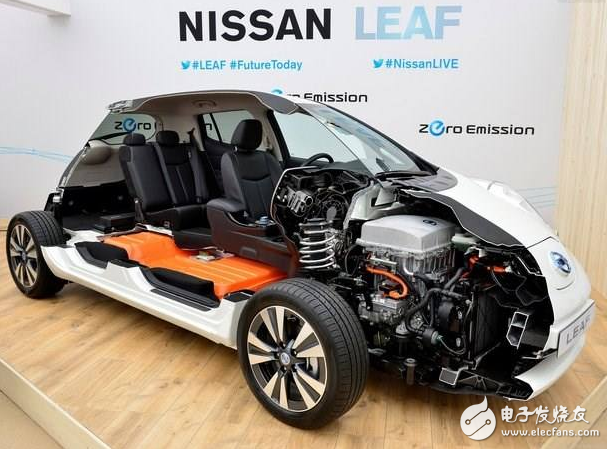
Privacy statement: Your privacy is very important to Us. Our company promises not to disclose your personal information to any external company with out your explicit permission.
With the advancement of the times, electric vehicles have become a hot industry product, and new energy has become a hot topic of attention. Compared with the wired charging of electric vehicles, wireless charging has the advantages of convenient use, safety, reliability, no spark and electric shock, no dust and contact loss, no mechanical wear, no corresponding maintenance problems, and can adapt to rain and snow, etc. Bad weather and environment.
1: Electric vehicle wireless charging principleAt present, the wireless charging technology of electric vehicles mainly adopts electromagnetic induction type and magnetic field resonance type.

The basic principle of electric vehicle wireless charging, compared to wired charging, is mainly more than the receiving coil, a brief charging interface.
Electromagnetic induction is a relatively mature technology. Many mobile phones are wirelessly charged, and even our common induction cooker is the principle. The primary coil has a certain frequency of alternating current, and a certain current is generated in the secondary coil clock by electromagnetic induction, thereby transferring energy from the transmitting end to the receiving end. When using, the distance between the two devices must be very close, the power supply distance is controlled from 0mm to 10cm, and the charging can only be performed one-to-one with the coil. Electromagnetic induction wireless charging has a high energy conversion rate and a large transmission power range, from several watts to several kilowatts. The principle of magnetic field resonance is similar to acoustic resonance, as long as the two media have the same resonant frequency, energy can be transferred. The charging distance of this method is between electromagnetic induction type and radio wave type. The advantage is that the transmission power is large, and it can reach several kilowatts. It can charge multiple devices at the same time, and does not require the coils between the two devices. The disadvantage is that The loss is very high. The farther the distance is, the larger the transmission power is, and the more the loss is. The most troublesome is that the frequency band used must be protected.
2: Electric vehicle wireless charging technologyNissan Rubik's electric car: Electromagnetic induction that provides power between the power supply coil and the power receiving coil. A power receiving coil device is installed on the chassis of the automobile, and another power feeding coil device is installed on the ground. When the electric vehicle drives to the power supply coil device, the power receiving coil can receive the current of the power feeding coil, thereby charging the battery. . At present, the rated output power of this device is 10kW, and the average electric vehicle can be charged within 7-8 hours.

Japanese wireless plug-in hybrid bus: electromagnetic induction type, the power supply coil is buried in the concrete of the charging stand. After the car is turned on the charging station, when the car coil is aligned with the power supply coil (coincident), an indicator light on the instrument panel inside the car will light up, and the driver presses the charging button to start charging.

There are currently three types of wireless charging methods: electromagnetic induction charging, magnetic field resonance charging, and radio wave charging.
Electromagnetic induction charging: There is a certain frequency of alternating current in the primary coil, and a current is generated in the secondary coil by electromagnetic induction, thereby transferring energy from the output end to the receiving end to complete wireless charging.
Magnetic field resonance charging: The application of wireless charging technology is derived from wireless power transmission technology. Magnetic resonance is used to transfer charge in the air between the charger and the device. The coil and capacitor form a resonance between the charger and the device to realize efficient energy transmission. technology.
Radio wave charging: It mainly consists of a microwave transmitting device and a microwave receiving device. As shown in the figure, the receiving circuit can capture the radio wave energy rebounded from the wall and maintain a stable DC voltage while adjusting with the load.
In general, the wireless power supply technology using the principle of electromagnetic induction is the most realistic, and now has practical applications in electric vehicles; the electromagnetic induction type non-contact charging system has the following three problems: (1) the power transmission distance is relatively short, If the lateral deviation of the two coils is large, the transmission efficiency will be significantly reduced. At present, the transmission distance can only be achieved to be about 10 cm, and many heat dissipation problems, such as heating between coils, need to be considered. (2) The coupled radiation problem, the electromagnetic wave coupling will not have a large magnetic field leakage. Electromagnetic induction transmits power between coils. Like our magnets, there is a certain leakage in the outer ring. How to avoid being affected is a big problem. (3) There is also the possibility of debris entering between the coils, and some animals (cats and dogs) enter the inside. Once the eddy current is generated, it is like the induction cooker, and the safety problem is very obvious.
February 13, 2023
November 06, 2021
Nippon Electric Co., Ltd. has listed an electric torque tester that combines the torque meter "TNX" series with the data management function test bench "DSP-10". By combining the...
Electric double eccentric butterfly valve cut off and throttling effect in the pipeline, electric double eccentric butterfly valve opening and closing pieces is a disc-shaped disc, rotating around...
In life, we often encounter accidents like this, for example, our tools are broken. If you buy a new one, it is a bit extravagant; if you let the professional repair it, it will be fine for people to...
This patent was applied by Beijing Hua Chong Long Run Environmental Technology Co., Ltd., and was authorized notice on March 15, 2017. Description of content The present invention relates to the...
Email to this supplier
February 13, 2023
November 06, 2021

Privacy statement: Your privacy is very important to Us. Our company promises not to disclose your personal information to any external company with out your explicit permission.

Fill in more information so that we can get in touch with you faster
Privacy statement: Your privacy is very important to Us. Our company promises not to disclose your personal information to any external company with out your explicit permission.